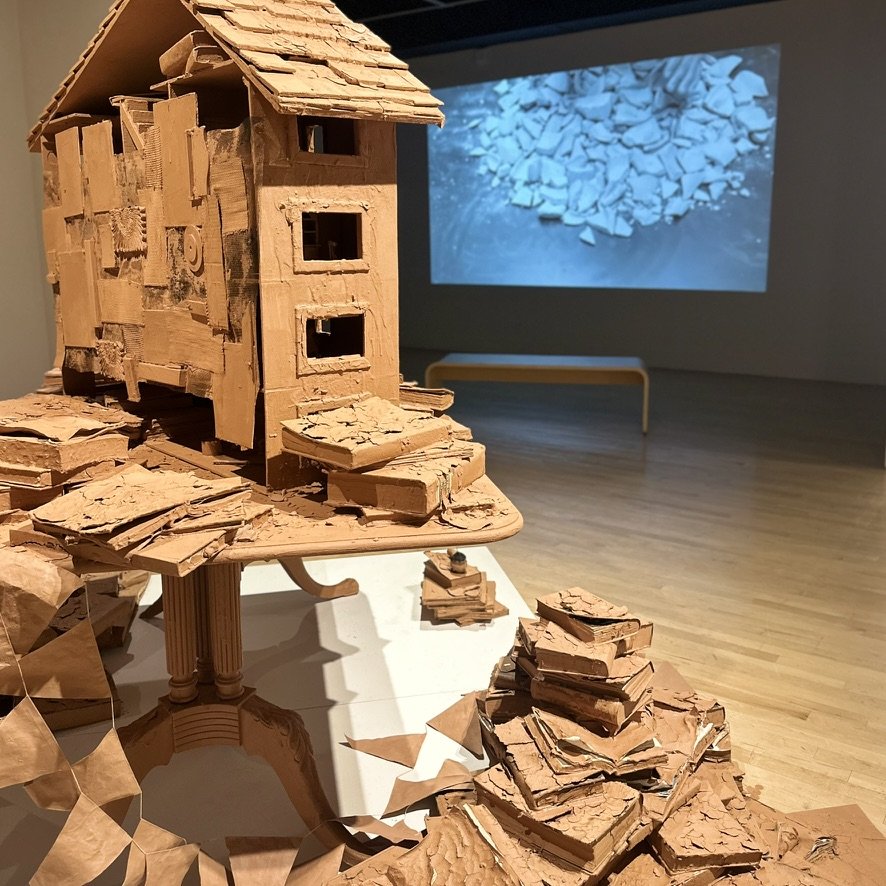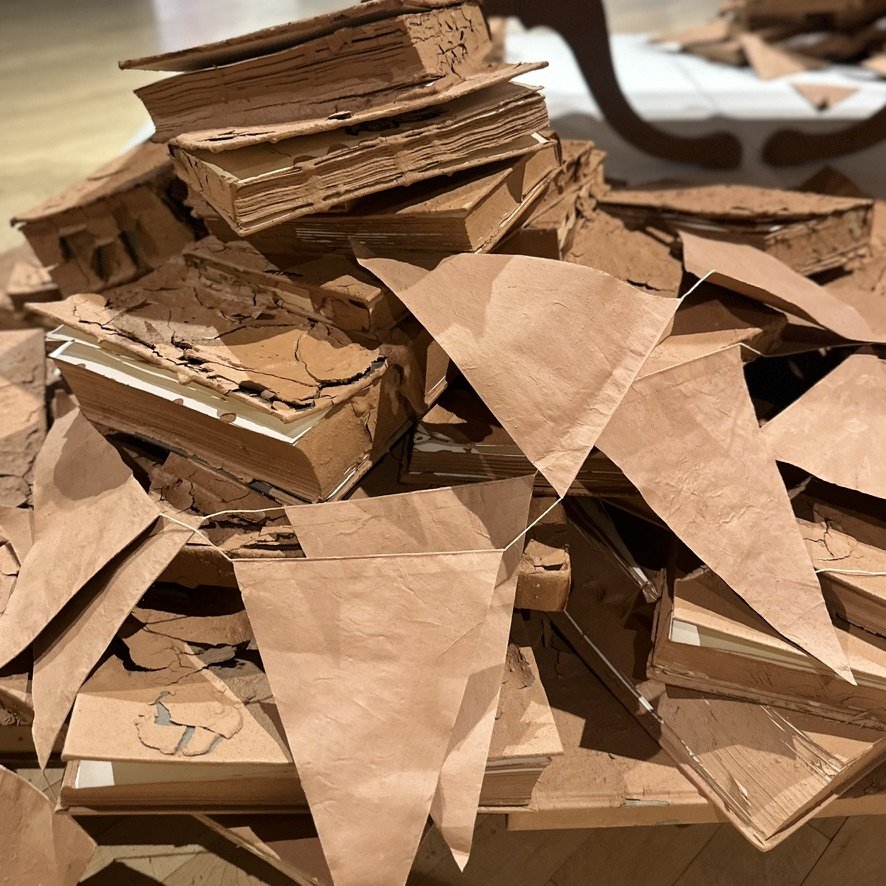These found, antique, clay-washed objects symbolize the fraught legacies of mestizaje, the ideological construct that has sought to erase Indigenous and Afro-Mexican identities in favor of a homogenized Mexican national subject. As a civilizational model, mestizaje has fostered the illusion of postcolonial subjectivity while obscuring the colonial and racist foundations upon which modern nation-states continue to be built—crumbling structures that perpetuate systemic oppression. The books symbolize the media's power to shape knowledge. The table represents the hierarchical structures of caste, determining who is allowed a seat at the master’s table. The house embodies failed state infrastructure, promised to all but accessible to few, while the pennants allude to national celebrations and festivities, which play a crucial role in fostering and strengthening “national identity and unity”.
Tinoco’s work exposes the contradictions embedded within Mexican state-sponsored narratives of multiculturalism, drawing attention to the ongoing struggles for land and autonomy faced by Indigenous communities. More than a critique, her installations offer an alternative: a call for self-determination and autonomy from the state. By embedding a sprout of corn within these objects, Tinoco signals the possibility of renewal and perseverance, aligning her practice with a broader politics of refusal and self-governance.

















